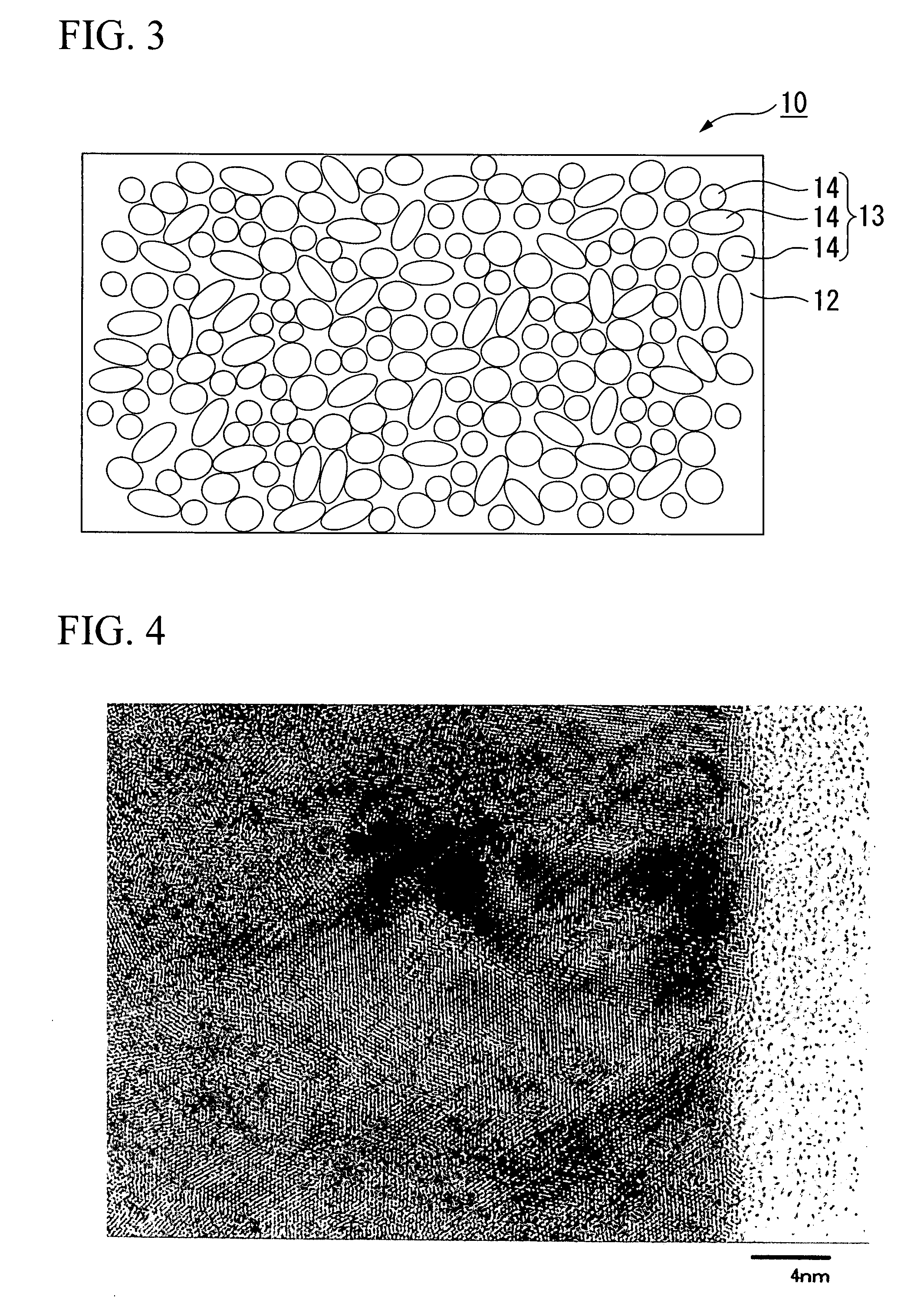Noise-suppressing wiring-member and printed wiring board
a technology of wiring-member and wiring board, which is applied in the direction of cross-talk/noise/interference reduction, electrical apparatus contruction details, and association of printed circuit non-printed electric components, etc., which can solve the problems of simultaneous switching noise in the power supply layer and the ground layer, and the inability to acquire such a material
- Summary
- Abstract
- Description
- Claims
- Application Information
AI Technical Summary
Benefits of technology
Problems solved by technology
Method used
Image
Examples
examples
[0157] In the following, the present invention will be explained in more detail with reference to Examples and Comparative Examples. However, it should be apparent that the present invention is not limited to these examples.
examples 1 to 3
(Thickness of Noise Suppressing Layer)
[0158] The thickness of a noise suppressing layer was measured at five points by observing a cross section of the noise suppressing layer using a transmission electron microscope manufactured by Hitachi, Ltd., under the trade name of H9000NAR and the measured values were averaged.
(Adhesive Strength)
[0159] The strength required for peeling a copper foil layer of a wiring member from an insulating resin layer was measured at a peeling rate of 50 mm / minutes and a peeling angle of 90° using a Tensilon tensile tester in accordance with JIS C5012.
(Noise Suppressing Effects)
[0160] A two-layered board composed of a ground layer and a power supply layer was prepared. At both ends of one of the power supply layer divided in two, SMA connectors linking to the power supply layer and the ground layer are mounted. S21 (transmission attenuation amount, unit: dB) was measured in accordance with a scattering parameter (S parameter) method using a network...
example 1
[0162] An electrolytic copper foil layer with a thickness of 35 μm had a smooth surface and a roughened surface. The surface roughness Rz of the smooth surface was 2 μm. In contrast, the surface roughness Rz of the roughened surface was 5.3 μm. On the smooth surface, a solution containing 1% by mass of 3-glycidoxypropyltrimethoxysilane was applied and dried to form an adhesion promoting layer.
[0163] 30 parts by mass of bisphenol A type epoxy resin (manufactured by Japan Epoxy Resins Co., Ltd., under the trade name of 828), 30 parts by mass of bromine bisphenol A type resin (manufactured by Tohto Kasei Co., Ltd., under the trade name of YDB-500), and 35 parts by mass of cresol novolac resin (manufactured by Tohto Kasei Co., Ltd., under the trade name of YDCN-704) were dissolved in methyl ethyl ketone. Then, 0.2 parts by mass of imidazole-based hardening accelerator (manufactured by Shikoku Chemicals Corporation, under the trademark of CUREZOL 2E4MZ) were added to the solution to pre...
PUM
 Login to View More
Login to View More Abstract
Description
Claims
Application Information
 Login to View More
Login to View More - R&D
- Intellectual Property
- Life Sciences
- Materials
- Tech Scout
- Unparalleled Data Quality
- Higher Quality Content
- 60% Fewer Hallucinations
Browse by: Latest US Patents, China's latest patents, Technical Efficacy Thesaurus, Application Domain, Technology Topic, Popular Technical Reports.
© 2025 PatSnap. All rights reserved.Legal|Privacy policy|Modern Slavery Act Transparency Statement|Sitemap|About US| Contact US: help@patsnap.com



